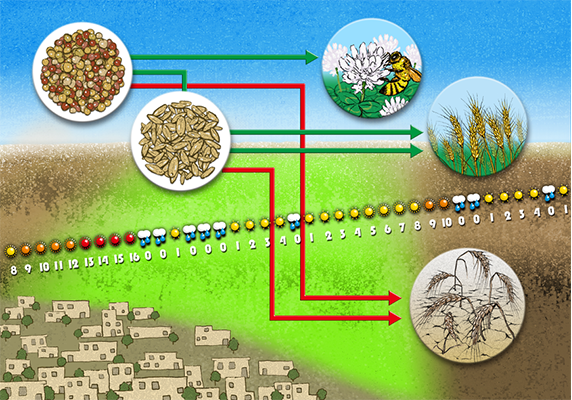Japan -- Prolonged dry spells and the shortage of precipitation are two major hazards that can spell disaster for agriculture worldwide. While modern technology and policies cannot mitigate such risk, we still greatly rely on the empirical knowledge of local weather patterns.
Researchers from Kyoto University and the University of Mosul have developed a mathematical model that can potentially mitigate drought for rainfed agriculture; and conducted a case study in the Nineveh Plains of Northern Iraq.
'Rainfed agriculture' -- as the name suggests -- is a type of farming where rainfall is the primary water source and is a major method of worldwide food production in terms of area. Naturally, it is especially suspectable to drought conditions.
First author Rasha Fadhil explains that while authorities such as the World Meteorological Organization recommend blurring raw data into the Standardized Precipitation Index to evaluate drought severity, but the data sets are limited since it is poor at predicting outcomes. Ordinary rainfed farmers are wise enough to establish empirical knowledge fully by utilizing available information.
The model, reported in Stochastic Environmental Research and Environment, is based on an index that tracks the number of consecutive dry days, denoted as 'dry spell length' or DSL. At its core, the data used is exceedingly simple: taking the number of dry days in a region and link it with rainfall depth over time. It turns out that the model is consistent with farmers' strategic decision-making on their crops to mitigate drought.
Koichi Unami from the Graduate School of Agriculture, who conceptualized the study, emphasizes that the notion they explored was exceedingly straightforward and is surprised that it had not been utilized by scientists earlier.
Unami explains that the study's initial motivation was to find a better index for real-time decision-making. He concludes that facilities for supplemental irrigation should be developed as a means of averting drought risks, even though more dialogue is needed to coordinate various interests -- including water rights -- currently controlled by different militia organizations.







